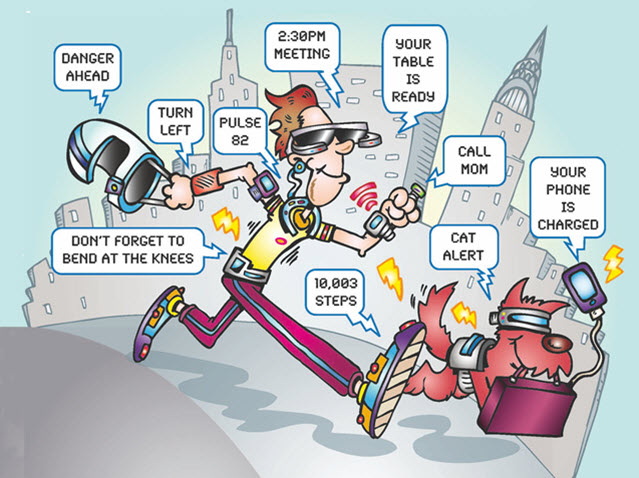
While 2015 was projected to be the year when wearable devices would take off, it appears we’ll have to wait a little while longer for widespread adoption. And as we plan for this shift, it’s important that we prepare for the impact wearables will have on marketing.
A Brief History of Wearables
While wearables devices like the Apple Watch and Fitbit have exploded onto the scene in recent months, they certainly aren’t the first wearable devices. Wearables – albeit going by different names – have existed for decades. From Walkmans and pagers to Tamagotchis and ankle monitors, people have been using wearable technology for years.
The difference in 2016 is that wearables are now backed by the Internet of Things (IoT) and have communication capabilities – along with screen technology – that allows for the distribution of messages and dissemination of content.
What Wearables Mean for Marketing
The international market for wearables is expected to grow at a 35 percent annual rate between now and 2019. As a result, marketers will be forced to adapt strategies to these sleek, omnipresent devices that will rapidly infiltrate the consumer marketplace. Specifically, here’s what it’ll mean for marketing:
Rise of Geo-Targeted Campaigns
One of the biggest changes will occur in the form of geo-targeted campaigns. While marketers already have options for geo-targeting customers – particularly when it comes to PPC advertising and SEO – the ability to deliver hyper-targeted ads will only improve in the future.
It’s very likely that brands will be able to pinpoint the exact location of their target customers in the coming years. This will allow you to deliver extremely timely and appropriate messages on a regular basis. As a result, you’ll be able to eliminate wasted ad spend and increase conversions with less effort.
Shorter Form Content
Over the past decade, we’ve seen a shift from shallow short form content to targeted long form content. This trend is rooted in the fact that search engines value semantic content over shallow content that’s stuffed with unnatural keywords. Well, as wearables become more popular, you can expect a reverse effect to take place. Brands will learn to love short form content again.
However, this time the short form content won’t be shallow or keyword-centric. The need for shorter content will be rooted in the demand for concise messages that can be consumed quickly on tiny screens. Content marketing will look a lot more like tweets than long white papers and interactive guides.
To get closer to the desired result, you can use WebCEO’s Content Assistant, which will help greatly enhance your ability to create concise, impactful, and SEO-friendly content.
Niche-Specific Articles
As wearables gain prominence, content marketers will be able to focus on creating niche-specific articles that will serve targeted goals. That’s because semantic searching will replace traditional queries altogether. In other words, people will stop using keyboards and search bars to run Google searches. Instead, speaking into devices will become the only option.
From a content marketing perspective, this means you’ll have to transition to a totally different format. Even more so than now, your content will need to be written in a format that’s conducive to verbal communication. This will lead to a fundamental pivot in the content marketing industry and a demand for fresh content. That’s not to say all of your previous content will be useless, but it certainly won’t be useful unless it’s complemented by semantic-friendly techniques.
The Future of Wearable Marketing
While we may not know which wearable devices will stick or how exactly they’ll function, we do know that they’ll exist, and in droves. Over the course of the next five years, look for wearables to proliferate the market. They’ll become less of a fad and more of the norm. As a progressive marketer looking to gain a competitive advantage, it’s imperative that you understand this and shift your strategies to account for these changes.


